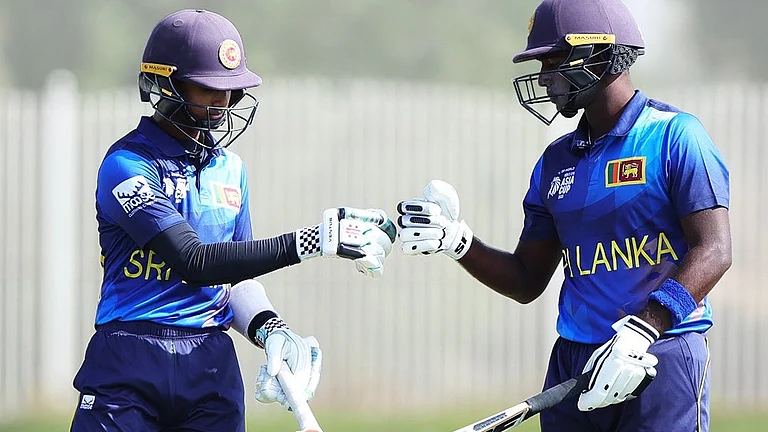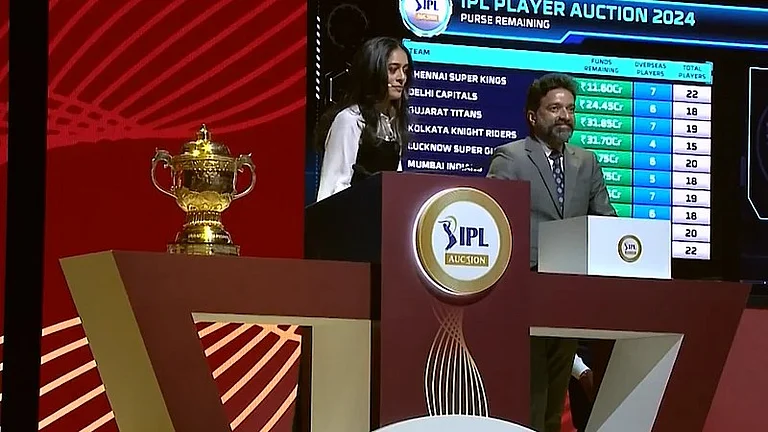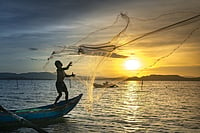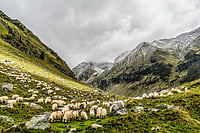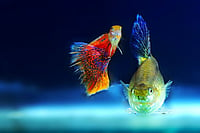Should we not thank our good fortune that unlike our distant ancestors we do not have to hunt for food; we simply buy it from the neighbourhood shop or even online from the comfort of our home. Let us recall that hunting for food gathering, in fact, has been the most important and time consuming activity of humans in the ancient civilisation for innumerable centuries; though now it has been quite a while since it vanished. However, fishery still holds. Fish, being an affordable and rich source of animal protein and considered one of the healthiest options to mitigate hunger and nutrient deficiency, is a widely consumed food, produced and supplied by an advanced commercial food industry which is still relying upon hunting. The methods of hunting involve both the primitive or traditional methods of fishing in the developing countries and an industrial scale hunting using the most advanced sophisticated technology elsewhere. Hunting for fish too is likely to disappear one day, as the continuing developments indicate. But it is not likely to happen immediately or in the near future, even though it may be sooner than we expected.
Capture fishery has been demonstrating either declining or stagnant trends all over the world during the past decade or more, while fish farming or aquaculture has been registering an impressive growth. An indicative sign that the hunter is giving way to the farmer. Quite obviously, the hunter fisherman too now needs to develop alternative skills to secure his livelihood and graduate to be a farmer as the last of the wild food is being, and shall continue to be, rescued by farming. Aquaculture shall have to hold on and consolidate upon its growth to keep up with the supply of our requirement of animal protein. The global population could be assured of its fish supply in the coming years only if fishery, gradually but surely, evolves itself from hunting to farming. Why so?
Also Read | Ornamental Fishery: Could Farmers Reap Gold?
On a diligent reading of the Food and Agriculture Organisation’s (FAO) prestigious publication ‘State of World Fisheries and Aquaculture’, one can only draw one inference that above 90% of the global marine fisheries resources are either fully exploited or over exploited or depleting. So, mankind is left with less than 10% of the resources that could be harvested in the future. The status of inland capture resources too does not offer much hope; what with competing priorities for water usage – irrigation, sewage, hydel power etc., fisheries inevitably lands at the bottom of the list of priorities. The consistent decline in marine capture fisheries becomes more worrisome when we witness the rapidly growing demand for fish food, from less than 10 kilogram per person per annum more than half a century ago to nearly 21 kilogram today.
Fish Production
Global fish production has been recorded at about 179 million tonnes in 2018; 82 million tonnes of this production is credited to aquaculture. Out of this, 156 million tonnes of fish were used for human consumption, equivalent to an estimated annual of 20.5 kg per capita. The remaining 22 million tonnes were diverted for non-food uses, primarily as fishmeal and fish oil. Aquaculture accounted for 46% of the total production; however, 52% of fish for human consumption came from aquaculture. Compare this to the average of the decade 1986-1995 when the contribution of aquaculture to the total global production was a mere 14.6%. It truly is a pointer towards phenomenal growth and future potential. Since the year 2001 to 2018, the year up till which authenticated global data is available, aquaculture has registered an average annual growth of 5.3%, an achievement few sectors could boast of. It is a clear illustration that aquaculture or fish farming, as it is popularly understood, is progressing impressively to counterbalance the pessimistic scenario of global fish resources by offering trends and outlook of optimism. It is undisputedly recognised that only aquaculture could be the answer to meeting the growing global demand of fish for food. Therefore, we need to acknowledge, recognise, and affirm the critical importance of fish farming not only to food and nutritional security as also to securing rural livelihoods.
Against the background of such a scenario, it is indeed depressing to note that global under nourished population has reached a figure of above 800 million, and 98% of this population is in the developing countries. On the other hand, middle class population in these countries has also shown a steady growth; the middle class is expected to grow to about 66% by 2030 in the Asia Pacific countries. Aquaculture, through appropriate interventions and management, could significantly contribute to the food security of the millions of poor and under nourished. Further, the growing demands of the rising middle classes, with their increasing purchasing power and heightened levels of awareness is leading to a demand for healthy nutritious food, and this is a clear indicator of future trends for fish. How do we continue to meet this demand? Let the answer be reiterated in one word: Aquaculture; an answer Asia recognised centuries ago, but the rest of the world is waking up to now. Since aquaculture now accounts for more than 52% of the world’s fish food production for human consumption, even the diehard sceptics admit that times are not far when almost the entire fish food would be supplied by aquaculture. Asia has always been the cradle of aquaculture and would remain so in times to come. India being a global giant in both fishery and aquaculture should remain in the forefront of this growth. Therefore, maintaining growth of aquaculture in a sustainable manner is a challenge, more so in Asia in general and India in particular, where aquaculture is growing at a much faster pace than any other food producing sector.
The Challenges
Despite acknowledgement of its importance as the only solution to the global availability of fish food, this sector is confronted with serious inadequacies of planning, funding and management. There are innumerable challenges to the conservation, development and growth of aquaculture species, ranging from availability of seed and feed, absence of adequate post-harvest facilities, environmental threats, disease risks, trade barriers to name a few; these threaten both economic and socio-economic development in many developing countries of the world. Hitherto we in India, as also the other Asian countries, were addressing these issues only from the perspective of livelihood and nutritional security of our populations. Of late aquaculture has been graduating from mere food farming to a viable commercial activity. This is creating a paradigm shift in our aquaculture policies and practices. In this context, it is important that while looking for greater share in global trade in aquaculture and creating newer markets, we do not end up neglecting the food and nutritional needs of our own populations. Our region-specific development perspectives should motivate us to balance fisheries trade and exports with the growing demand for fish food within our own country. We observe that focus and emphasis in global and regional fora has become restricted primarily to development and management of species which are internationally traded and are of commercial value in the markets of the developed world. While by itself it indicates the growing economic strength of aquaculture sector, it also leads to serious concerns that indigenous fish species, especially carps, which form nutritionally rich staple food of the people of India and other parts of the developing world, are being neglected. It is an opportune moment for India along with the other leading aquaculture producing nations, all of which are developing nations and belong to the Asia region, to seriously address these issues.
Contributing 7.58 % to the global production, India is the second largest fish producing country in the world. The fishery sector contributes 1.24% to our nation’s Gross Value Added (GVA) and 7.28% (2018-19) to the agricultural GVA; needless to add that fisheries and aquaculture continue to be an important source of food, nutrition, income and livelihood to millions of people. This largely unsung sector has been registering an impressive annual growth rate hovering between 8 to 12% over the past decade. Fish, including fishery products, is the single most valuable export commodity growing consistently at around 10% in the recent times; the total value of our annual exports being about Rupees 47,000 crore, equivalent to approximately US$ 6.75 billion.
Bucking the global trend, our marine waters still hold plenty of fish. The marine fisheries potential in our oceans is estimated at 5.31 million tonnes as against present production of 4.17 million tonnes. So, while the rest of the world is concerned about the depleting and vanishing resources, the challenge before us is to harness what we have. Our marine fishery resources are spread along the country’s vast coastline with 2.02 million square km Exclusive Economic Zone (EEZ) and continental shelf area of 0.53 million sq.km. In addition, we are also bestowed with varied inland fisheries potential resources in the form of rivers and canals (1.95 lakh km), floodplain lakes (8.12 lakh hectares), ponds and tanks (24.1 lakh hectares), reservoirs (31.5 lakh hectares), brackish water (12.4 lakh hectares), saline/alkaline affected areas (12 lakh hectares) etc., with current estimated fish production potential of about 17 million tonnes as against production of 9.58 million tons during 2018-19, harnessing only 56.3% of the estimated potential. So we have a long path to tread, a path offering immense economic opportunities.
Livelihood
According to government estimates, the fishery sector in our country provides livelihood to about 25 million fishers and fish farmers. Twice this number is engaged along the production and value chain. The sector has immense potential to enhance incomes and usher in economic prosperity to stakeholders. Therefore, sustained and focused attention to fisheries and aquaculture through policy and financial support is a desirable way forward. The objective should be to accelerate its development in a manner which is sustainable. While moving forward in this journey, we must recognise that majority of fisher folk, especially the small scale and artisanal fishers continue to fall behind the national indices of socio-economic development, and have been traditionally marginalised. The policy for development of the sector should provide strong impetus towards amelioration of poverty and backwardness among these marginalised and vulnerable communities. Sustainable development, in the context of fishery and aquaculture, should mean development which is inclusive and equitable; development which expands beyond the pale of production and productivity enhancement to embracing fisher and fish farmer welfare.
The Pradhan Mantri Matsya Sampada Yojana (PMMSY) with an estimated investment of Rs. 20,050 crores expressly states as its objective “harnessing of fisheries potential in a sustainable, responsible, inclusive and equitable manner.” Recognition of fish as a “sampada” – which means wealth – should hopefully make fishery and aquaculture an important vehicle for economic prosperity. After all, shrimp farming has decisively demonstrated that aquaculture could profitably graduate from livelihood farming to a flourishing business. Today we are world leaders in shrimp exports having captured 26% global trade. So why not aim for global dominance in father entire gamut of fishery and aquaculture?
Let us love this Fishy Business, not decry it.
(The author is former Secretary, Ministry of Fisheries, Animal Husbandry and Dairying, Government of India)








